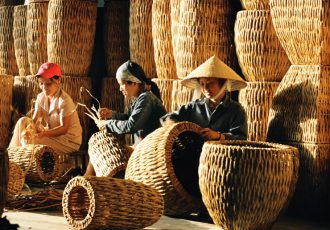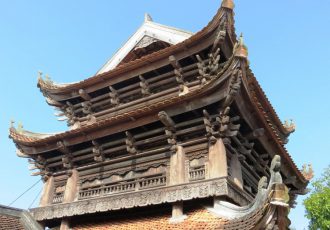The Vietnamese village is very important. Most Vietnamese live in villages, some Vietnamese villages form a commune. Several communes make up a large village. The Vietnamese from generation to generation are attached to their village, with a special love for their birthplace. This is why a distinction is made between the original population and the resident population. We do not congratulate at all someone from another village who settles in our village. He is considered an immigrant by the resident population and does not have the right to participate in the communal activities of the village.
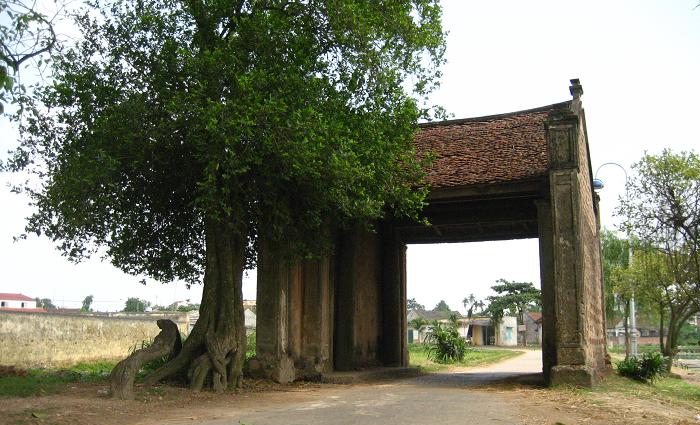
This distinction is intended to maintain the stability of the villages. At the level of the Vietnamese village administration, from the age of 18, young people must participate in the confirmation ceremony to change classes. Then, he is entitled to a plot of the communal field to cultivate; the harvests, deducted from the part he must pay to the municipality, belong to him and constitute a significant income.
The supreme honor of a member of the giap (the age from 18 years) to rise to the rank of elders. Usually, we arrive in the category of elders at 60 years old. To become old means to occupy a place of honor on the high-placed mat. The old class is honored by the whole village. In mountain communities that have hardly been influenced by Chinese culture since imperial times; the gia lang (village elders), and hoi dong gia lang, the Council of Village Elders kept the powers. In the Viet regions (in the delta), where the real powers in the village were transferred to the younger classes; the tradition of respecting the elders has always been maintained. Respect the elderly and you will become old says the Vietnamese proverb.
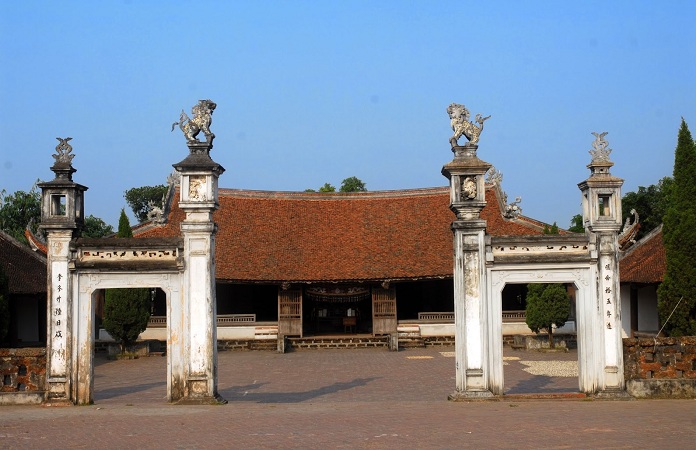
Hierarchy in the village
In the solemn sessions, the elders are placed in the same rank as the Tu Tai (bachelors), the septuagenarians, next to the Cu Nhan (licensees) and the octogenarians with the Tien Si (doctor).
- The Chinh Cu population (native or native) in the village of Vietnam is divided into 5 categories:
- Chuc sac (graduate dignitary), including laureates ax competition or distinguished by the king.
- Chuc dich (dignitaries administrators), including people with defined functions in the basic administrative apparatus.
- Lao (elders) including all the elderly people of the village.
- Dinh (active), including men in the prime of life from 18 years old
- Ti au (Banjamins), children of the village.
The first two categories and part of the third, including the oldest, form an organ called village notables. These are in turn divided into great notables, notable administrators, and old notables. The notables include the oldest in the village and play an advisory role to the Council of Notables.
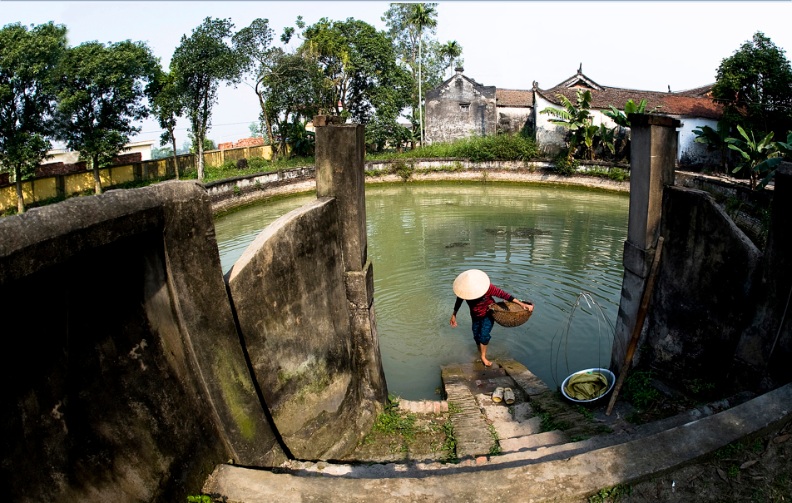
Thus, in direct relation to the population, and at the head of the li dich; there is the li truong (chief administrator) or xa truong (village chief); under his command: Pho li (deputy administrator), huong truong (who takes care of security). There is also the so dinh (population register), the so dien (land register); one to control work (able men), and the other for the economy (rice fields and land).
The spirit of autonomy
The high spirit of autonomy of the Vietnamese villages is evidence before which the feudal and colonialist state admits to being powerless. Peasant communes are like a small kingdom, with their own laws that villagers call Huong Uoc (village conventions); and their own small court (where the legislative body and the village administrators constitute the executive body.
In some villages to imitate the Court, there are four pillars. The pillars represent the four main mandarins of the Supreme Court. The Phep tradition vua thua le lang (the king’s law yields to the customs of the village) is an illustration of the democratic relations between the feudal state and the Vietnamese communes.
The characteristics of the Vietnamese village
In the villages there are traditional symbols of the communal character which are: the courtyard of the communal house, the edge of the public water point-the great banyan tree of the village.
The “Dinh”, the communal house of the Vietnamese village
It is an administrative center: all the important events of the village take place here. The council of notables and that of directors take place here. Taxes are collected there. It serves as a residence for great mandarins and dignitaries who come for inspection or visits. Courts are convened to try the accused, and convicts are held in pre-trial detention. It is also the cultural center: all the festivals and ceremonies of the village take place here. During the festivities, in the courtyard, theatrical performances are organized, it is also a center of worship. The construction of the communal house obeys strict geomancian constraints because the position of the land and the direction of the house are held responsible for the fate of the whole municipality. This is where the Thanh Hoang cult (tutelary genius of the village) is maintained.
The communal pool of the village
Located next to the communal house, this is where women gather for cleaning vegetables, washing rice… The communal well has become the typical symbol of women. So much so that in cases of hatred between two villages, a spell is cast at the well of the opposing village. For this, we plant a stake in the middle!
The present of banyan in the Vietnamese village
In Vietnam, the centuries-old banyan tree at the entrance of the village with at the foot a small altar continuously smoky with incense sticks is a sacred place. This is where geniuses or spirits meet (geniuses are in the banyan tree, ghosts in kapokier, owls and foxes in ficus say the proverb), if we respect the banyan tree, it is because we fear the genius in it). At the foot of the banyan tree, there is often a small refreshment bar, where peasants sometimes rest during the work of the fields, or passers-by. Thanks to passers-by, the foot of the banyan tree have become a kind of window that allows the village to look at the outside world.
The bamboo hedge
The wall surrounds the village and becomes a kind of solid rampart, inviolable, indestructible by fire, impossible to cross, with roots that prohibit digging underground. The bamboo row is an important feature that differentiates between southern villages and Chinese fortified farms surrounded by earthen ramparts.
The village in south Vietnam
A bit of history of the Vietnamese village
Under the Nguyen Dynasty, the exploitation of the southern plains brought a new face to the Vietnamese countryside. In the South, the countryside is also organized into villages, but if the villages in the North remain in a vacuum behind the bamboo hedge, the main characteristic of the villages of the South is openness.
Here, we do not see a bamboo hedge all around, with a gate that opens in the morning and closes in the evening as in the North. Households live in scattered ways, along roads or streams, in places where life seems easy to them. Their villages are not subject to strict institutions and most of them do not have their Huong Uoc (internal regulations). Thanh Hoang (tutelary genius) thus becomes a more or less vague notion.
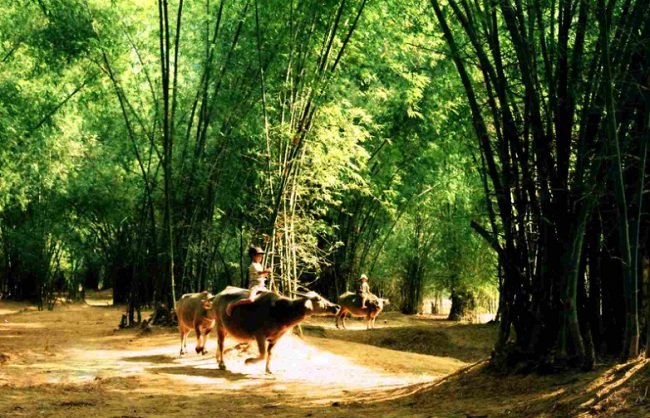
Characteristics of the Viretnamian village
In the south, hamlets and farms settle along the canals and arroyos. The population of the South Vietnamese village is often fluctuating. The peasant is not attached to the country as in the villages of northern Vietnam. This also gives the peasant of the South a more carefree character: you can spend everything you have earned, as you go, without taking care of the rest. This mentality is clearly reflected in a popular song from the South: on the way to adventure, if you see a bunch of ducks, you take them away, if the opportunity to get married arises, you take advantage of it, if you are invited to be a monk, you do not refuse.
All these differences have their reasons, the population is fluctuating because here. Much arable land is not yet exploited. You can easily leave your village to clear other less difficult lands. If we propose to the people of the South to change their habitat area, they are ready to do so. A family leaves easily, preceded by its herd of buffaloes. Meagre personal belongings in a small cart or boat. And everywhere you can find land to cultivate and wood to build a house. We are hardly embarrassed about the housing problem. However, even fluctuating, the population of the South is still organized into villages. In the shade of bamboos, each Vietnamese village has its communal house with its cult of tutelary genius, and people always gather on the occasion of the festival and annual ceremonies.



